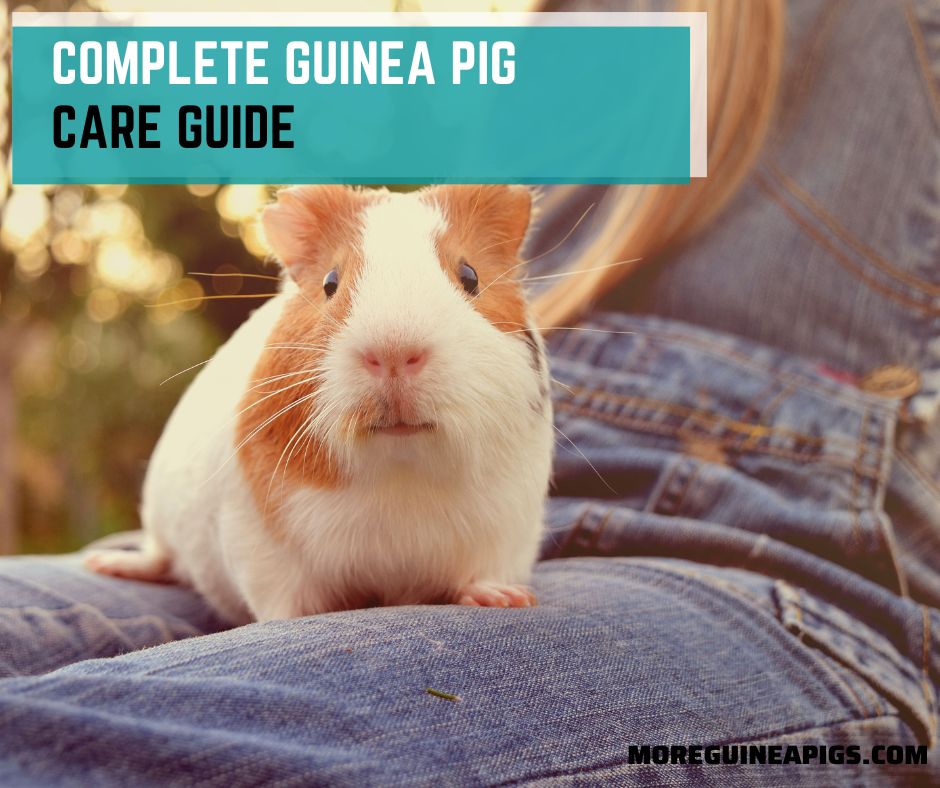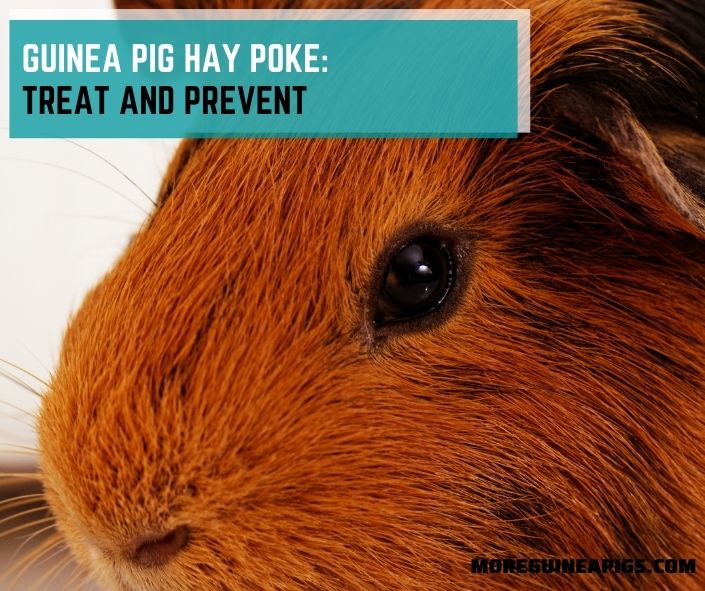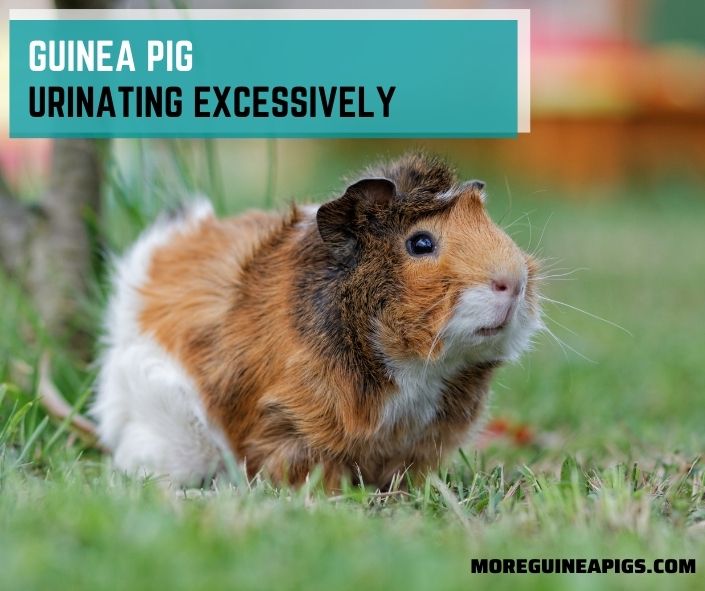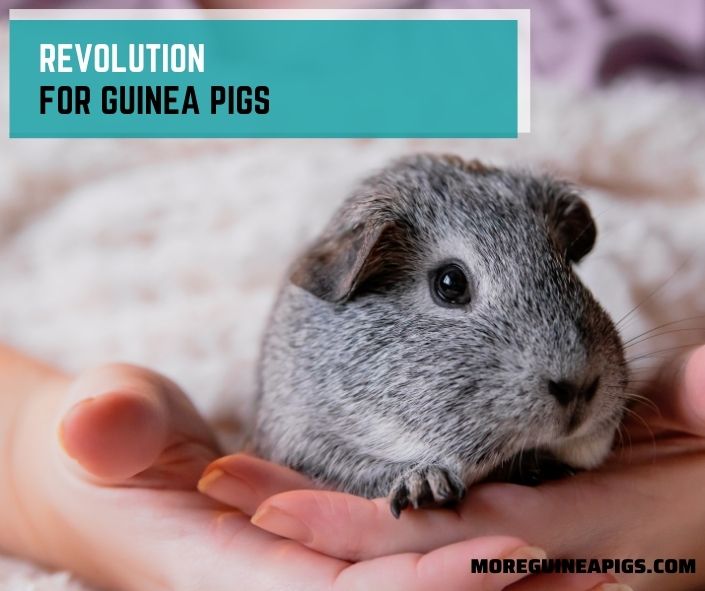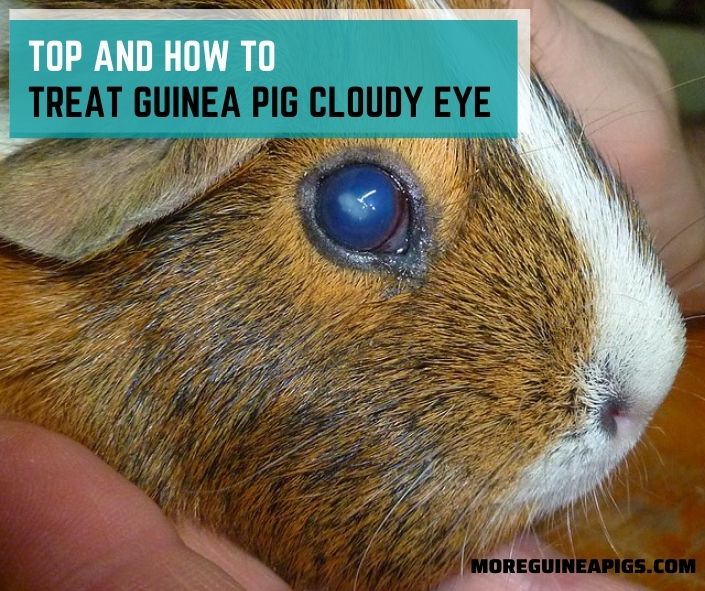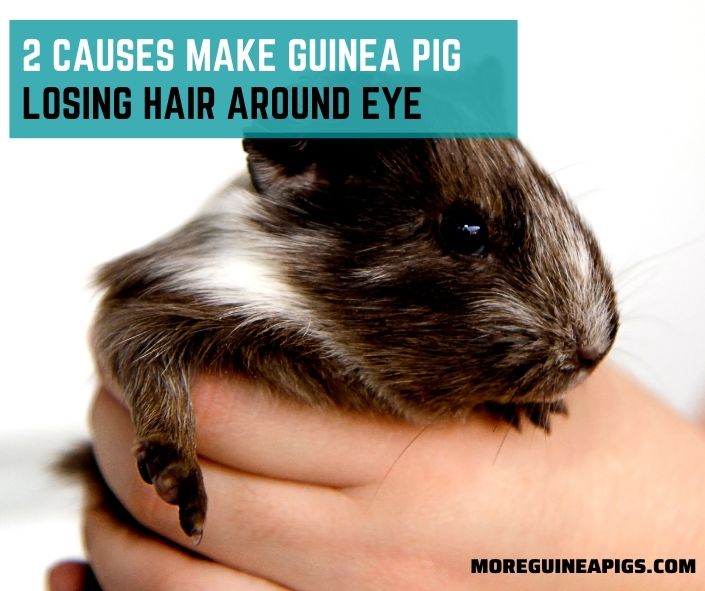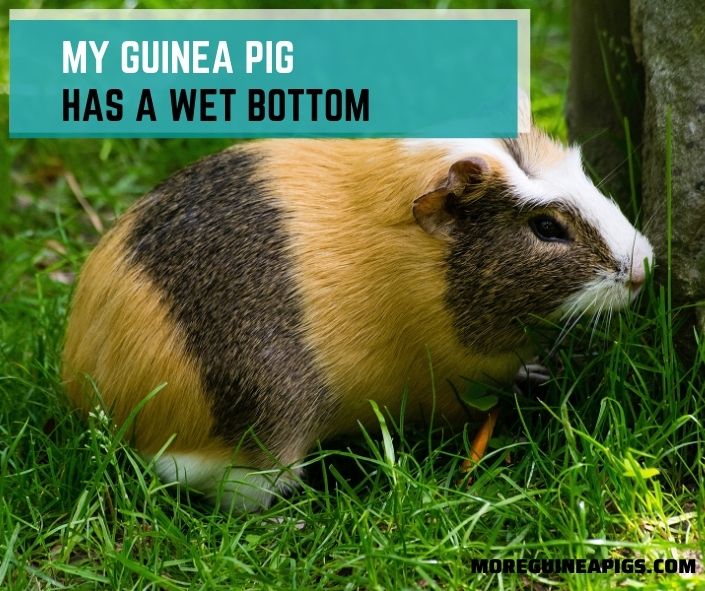Complete Guinea Pig Care Guide
First things first. Are you interested in having a guinea pig as a pet? If you are reading this article then most likely the answer is, “Yes!” Guineas are not for everyone, but those who have them love their pets dearly.
Guinea pigs require time and patience, as well as the desire and determination to learn how to keep them healthy. Guinea pig care is not something that should be taken lightly or done in a haphazard way. It can be very rewarding, but it also has many challenges.
Read on to see exactly what you will need to do for your guinea pig in order to keep them healthy and happy.
How To Care for Guinea Pigs

Is it easy to care for guinea pigs? Guinea pigs are furry, clean and very social animals that can provide lots of love and attention to their owners. However, keeping them is not an easy task.
Male guinea pig care: should be neutered to prevent aggression and urine marking.
Young guinea pig care: should be socialized early to prevent them from being fearful of humans.
Long haired guinea pig care: requires daily grooming to prevent mats and tangles. Guinea pigs are social creatures and do best when kept in pairs or small groups. They should have a spacious cage with plenty of toys and hiding places.
Housing
When choosing guinea pigs, it is important to select a pair that are of similar size and temperament. Once you have chosen your guinea pigs, you will need to provide them with a suitable home.
A cage or hutch should be large enough for them to move around freely, and it should be equipped with a bedding area, a food bowl, and a water bottle. Guinea pigs also require regular exercise, so it is important to provide them with a large enclosure where they can run and play.
Cage
A guinea pig’s home should be a cage large enough for him to have room to move around comfortably. The bar spacing on the cage should be no more than 1/2″ apart so he doesn’t get his head stuck between them.
A guinea pig should be kept in either a wire cage or a solid plastic (not mesh) aquarium. The minimum size for one guinea pig is 30”x 36”, but bigger is better. If you plan to get more guinea pigs, make sure the cage is bigger than that.
If you have a wire-bottom cage, try lining the floor with wood panels or even fake grass mats so your guinea pig’s feet won’t get injured from the wires.
Guinea Habitat Plus Guinea Pig Cage by MidWest w/ Top Panel, 47Lx24Wx14H Inches
Bedding
Guinea pig bedding is important because it gives Guinea pigs something comfortable and soft over which to walk. It also makes them feel more secure and protected in their homes by covering up the outside world. Bedding also absorbs their urine and helps prevent your guinea pig’s hutch from getting too smelly.
The best bedding for guinea pigs is not cedar, pine or scented litter. Cedar, pine and scented litters have been linked to respiratory problems in small animals. Instead, use recycled paper or bedding made of aspen shavings. Recycled paper can be used on its own, it does not need to be combined with other types of bedding.
Kaytee Clean & Cozy White Small Animal Pet Bedding 24.6 Liters
What Accessories Are Needed for a Guinea Pig?
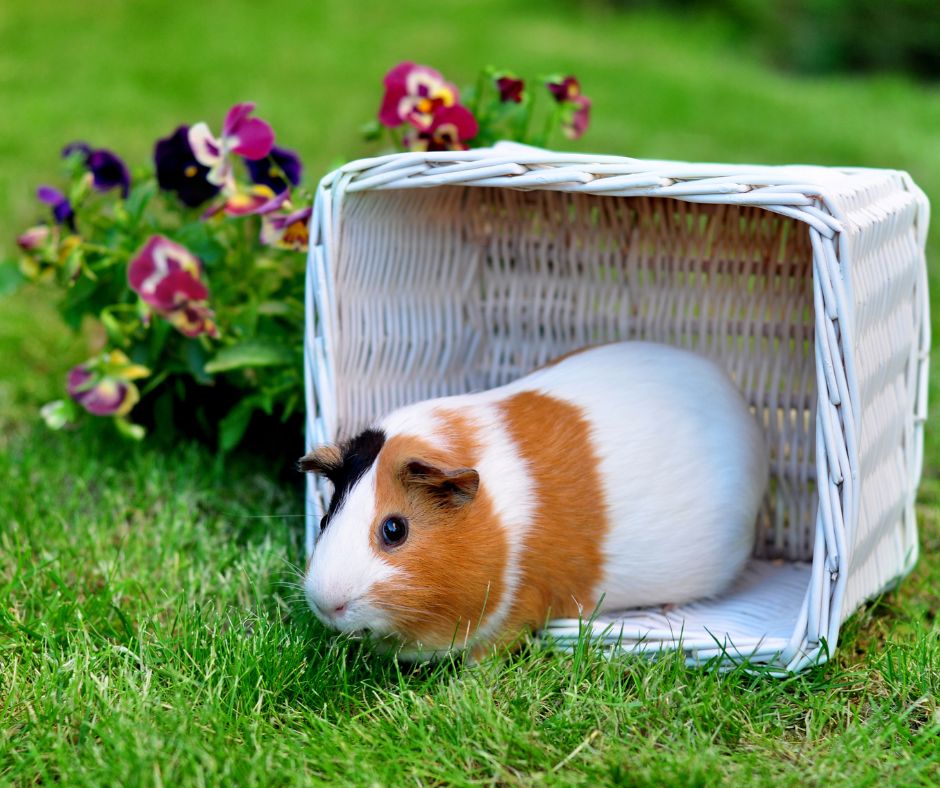
When choosing accessories for your guinea pig, it’s important to remember that guinea pigs are very social animals who enjoy living in groups.
For this reason, they require not only food, water and adequate cages, but also the companionship of other cavy friends. If you can’t get another guinea pig or want to keep your pet healthy while it’s on its own during the day while you’re at work, try getting another animal.
This is especially true if you want an “only” guinea pig – they can become lonely and bored when by themselves for too long.
Water Bottle
Your pet will need water available to him at all times, so make sure he has a good supply of freshwater every day. Be sure that you pick water bottle that isn’t easily spilled or tipped over since these accidents can be very dangerous for pets.
Choco Nose Patented No-Drip Water Bottle/Feeder for Guinea Pigs
Food dish
A wide, heavy food dish is best because it won’t spill and guinea pigs like to eat while sitting on the floor.
Other items
You’ll need to include an exercise ball or wheel, a couple of baskets or boxes with lids (your piggy needs someplace cozy to hide.
Pro tips:
1. Ideally, the cage should be in a quiet, peaceful area of your home where your guinea pigs can feel safe and secure. If possible, avoid putting the cage near windows or doors where there may be drafts or sudden noise.
2. Guinea pigs are also sensitive to temperature changes, so it’s important to keep their cage in a relatively cool area of your home. They thrive in dry environments with adequate ventilation and can tolerate temperatures ranging from 64-86 degrees Fahrenheit (18 – 30 Celsius).
3. Guinea pigs should never be housed near, or with rabbits or other species. Clinically normal animals may carry certain diseases that can kill your guinea pig quickly – like Bordetella bronchiseptica (which is commonly found in young puppies).
Diet
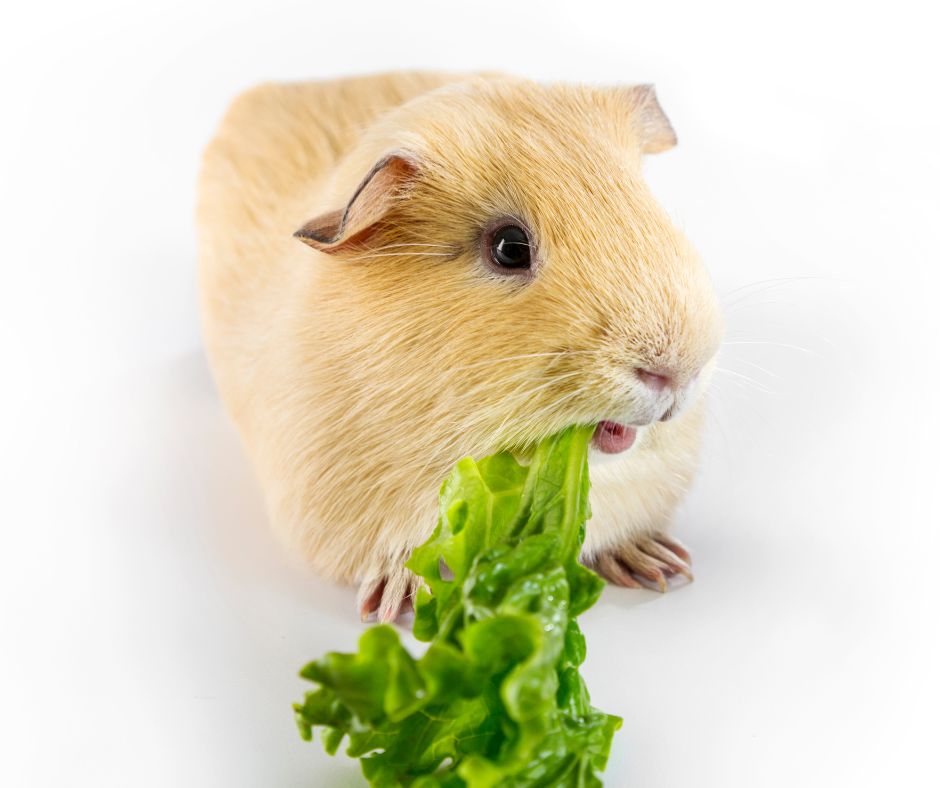
Feeding your guinea pig a balanced diet is important to keep them healthy. The best diet for a guinea pig is hay, fresh vegetables, and a small number of pellets. You should also provide fresh water at all times.
Piggies should always have hay at their disposal as it is an important part of their diet. It provides them with fiber, which helps avoid health problems such as enteritis and other digestive disorders. When choosing hay, look for fresh, green hay that smells good. Avoid any hay that is dusty or has mold on it.
Kaytee All Natural Timothy Hay for Guinea Pigs, Rabbits & Other Small Animals, 96 Ounce
Because they are unable to produce their own vitamin C, Vitamin C is important for guinea pigs to produce collagen, which the body uses to make things like ligaments and tendons.
They need between 10 and 30 mg/kg daily for good health. The best sources of dietary vitamin C for guinea pigs are fruits such as oranges, strawberries and papayas or from leafy greens, bell peppers, broccoli, cauliflower and certain squashes. Just be sure to wash the vegetables thoroughly before feeding them to your guinea pig.
Guinea pigs can get small amounts of vitamin C from vegetables such as tomatoes and green leafy vegetables, but they need to eat ten times more vegetable matter than fruit.
But don’t overdo it! A guinea pig will not overdose on vitamin C, it cannot be stored in the body so any excess is quickly eliminated through the kidneys.
As for pellets, give your guinea pig a small handful each day. Be sure to choose a pellet that is made specifically for guinea pigs and avoid any that contain added sugars or artificial ingredients. By following these simple tips, you can help ensure that your guinea pig stays healthy and happy.
Guinea pigs may also need to take medication if they are unwell, so it is essential that you can recognize symptoms of illness and know how to administer the treatment.
First of all, too many treats could change their natural diet by making them overweight or obese. This can lead to many other health problems, including heart disease.
Secondly, some human foods are toxic for guinea pigs and can actually kill them.
What Food Need To Avoid For Guinea Pigs?
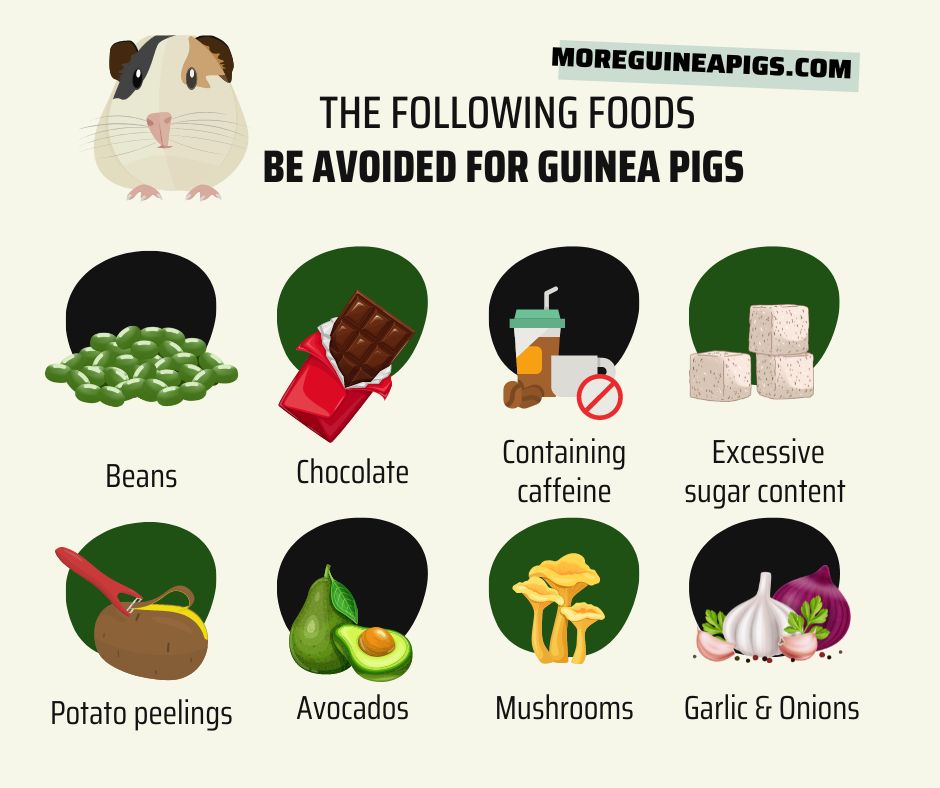
The following foods should be avoided for your guinea pigs including chocolate (or anything else containing caffeine); any food high in sugar content; beans; potato peelings; rhubarb leaves; Iceberg lettuce, avocados, mushrooms, Garlic, and onions. These items may cause gas or other digestive problems for the cavy.
How Often To Feed Guinea Pigs?
Once or twice per day, at least once daily. Guinea pigs should be fed with small portions of food several times throughout the day so they can munch on it rather than one large serving. Avoid feeding your guinea pig anything from your own plate. The cavy could become a fussy eater if you do this since it associates what
Grooming and Trimming
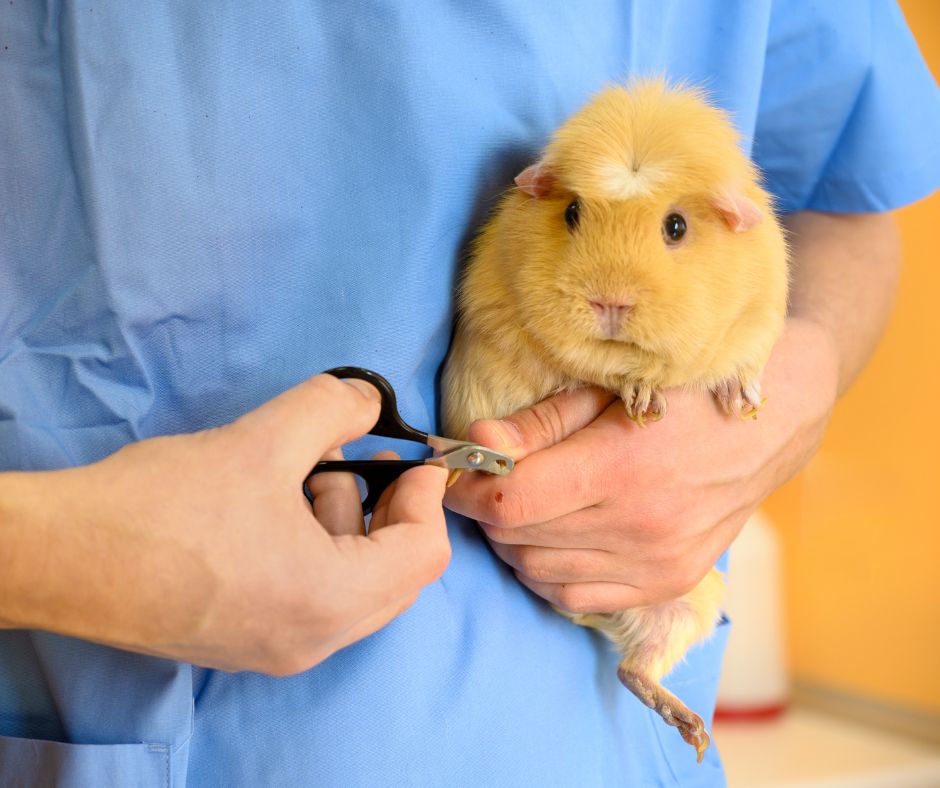
Grooming is a very important part of guinea pig care. In order to keep your pet physically and mentally healthy, you will need to take the time every day or at least once a week for proper grooming.
First, you must ensure that your hands are clean before touching your pet in order to prevent any spread of germs.
Begin by gently brushing their fur, starting from the back and working your way toward their head until all their fur is free of mats and tangles. If a mat does not brush out easily you may need to use some scissors to carefully cut them apart. You will want to be careful as you do this as guinea pigs have very thin skin that can be easily injured.
Kaytee Pro-Slicker Brush
Nail care and trimming is an important part of keeping your guinea pig healthy and happy. If their nails are not properly cared for, they can become overgrown and painful, making it difficult for them to move around.
Furthermore, long nails can also get caught on things and lead to injury. Fortunately, nail care is relatively easy, and only requires a few simple tools.
First, you will need a pair of sharp nail clippers. Second, you will need a file to smooth down any sharp edges. Finally, you will need some styptic powder or cornstarch to stop any bleeding in case you accidentally cut too deep.
Kaytee Pro-Nail Trimmer
Handle Tips
The most important part of handling guinea pigs is not to handle them. As soon as they know you will pick them up and carry them, they will let you do it all the time. Instead, sit with piggies on the floor and watch TV or read a book, show food treats and wait for the pig to come over and let you pet her.
If the pig is not used to being picked up, it can be a scary experience for both of you. Some pigs will panic and try to escape. Others just freeze in terror. When this happens, put the pig down as soon as possible before things go from bad to worse! If your piggie does not like to be picked up, then don’t do it.
Try sitting with him on the floor. Never pull or drag a pig that does not want to go! If you keep doing this, your pig will start to fear you and avoid you at all costs. Forcing your piggie to interact with you will only cause her more stress, and she may even associate you with being in a threatening situation.
It is important to always have a good relationship with your guinea pig. If they do not trust you, then it will be harder for you to bond with them.
Another way to interact with them is through their home turf. Guinea pigs are very territorial about their space. Try sitting on the floor and watching them for a little while.
You can move very slowly so as not to startle them, but be careful about sudden movements. They might interpret those as an attack from outside their territory! If you have more than one guinea pig, it is important to separate them during handling sessions because they will definitely fight.
Guinea pigs adore being petted behind the ears, on top of the head, and on the tops of their muzzles.
If you want to pick up and hold your piggy, then put one hand under her bottom and the other on top of her back like this:
This is a safe way of picking your guinea pig up. Giving them treats while you hold them will help them associate you with good things. Try putting the treats in their hand and letting them eat them from your hand. If you want to pick up a guinea pig that is not used to being handled or if you have never picked one up before, then go very slowly and gently.
Cage Cleaning
Cage cleaning is a necessary but sometimes daunting task when it comes to small pets like guinea pigs. These active and curious creatures require a clean and spacious home to stay healthy and thrive. The size of the cage is important, as guinea pigs need room to move around and explore. It should also be easy to clean and maintain.
When it comes time to clean the cage, start by removing all of the bedding and toys. Next, thoroughly wash the entire cage with warm water and a mild soap. Be sure to rinse away all traces of soap before adding fresh bedding and returning your guinea pig to its home. With regular cleaning, your guinea pig will enjoy a happy and healthy life.
Guinea Pig’s Behavior
Guinea pigs, as a general rule, are gentle and sweet creatures that love to be handled. They enjoy interaction with humans and seem to relish their time being petted and groomed.
Guinea pigs can also become quite attached to their human friends. The trick is for the human to be willing to take the time necessary in order to win.
Read more about guinea pig behaviors
When they are excited, they may make a wide variety of noises, including chirping, clicking, purring, and even squealing. Each noise has a different meaning, and guinea pigs use them to communicate their emotional state.
When a guinea pig is frightened, it will typically dart away and seek shelter. Most of the time they run in short dashes as opposed to running long distances.
If you need to catch one, simply corner it gently but firmly and wait for it to stop dashing about. Placing your hand palm up underneath them so they can run into it.
Never pick up a guinea pig by its back legs, as this can cause injury to the animal. Guinea pigs are easily frightened, but once they become used to their surroundings, they will allow themselves to be picked up and carried around without too much fuss or bother.
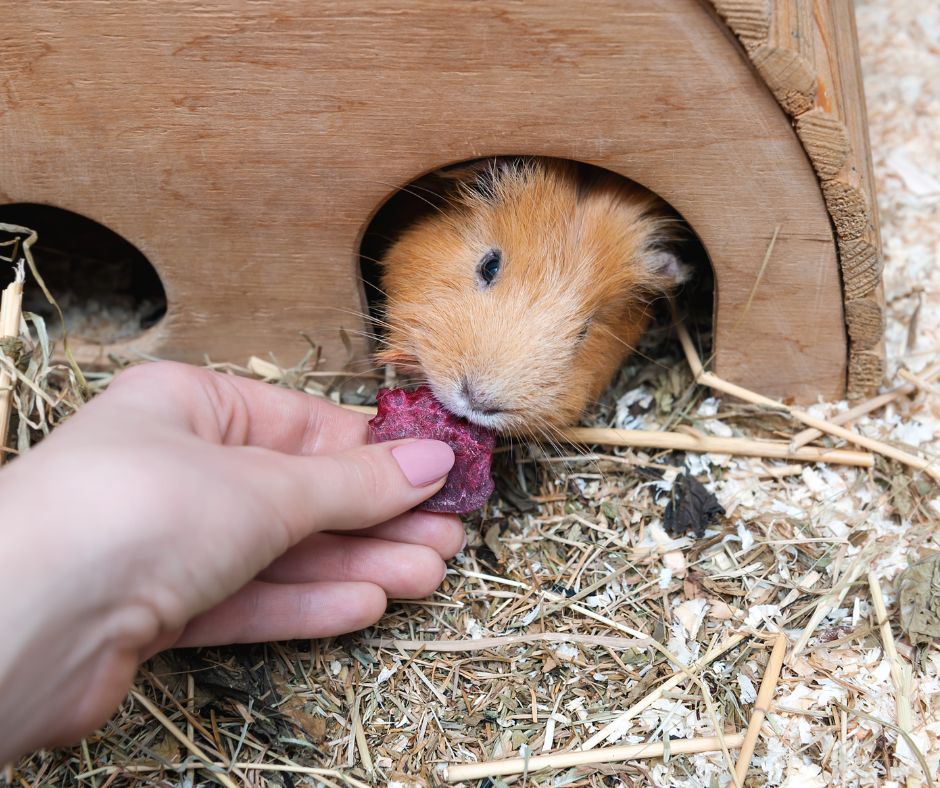
7 Common Health Problems of Guinea Pigs
Pet guinea pigs will have some health problems, sometimes they have a serious illness and this makes them uncomfortable. The following is a list of the most common diseases seen in pet guinea pigs:
- Upper respiratory infection
- Urinary Tract infection
- Tumors
- Skin infections
- Teeth overgrowth
- Vitamin C deficiency
- Tooth root abscesses
Respiratory infections (otherwise known as “wheezes”) in guinea pigs are extremely dangerous and can lead to death. The respiratory system is very sensitive and highly susceptible to infection. The slightest cold, flu, or other infection can turn into pneumonia very rapidly and therefore needs utmost attention.
In general, each disease will have a different severity depending on when the owner discovered the disease. So, learning about common diseases in guinea pigs allows you to identify and take care of your pet in time.
What Does a Healthy Guinea Pig Look Like?
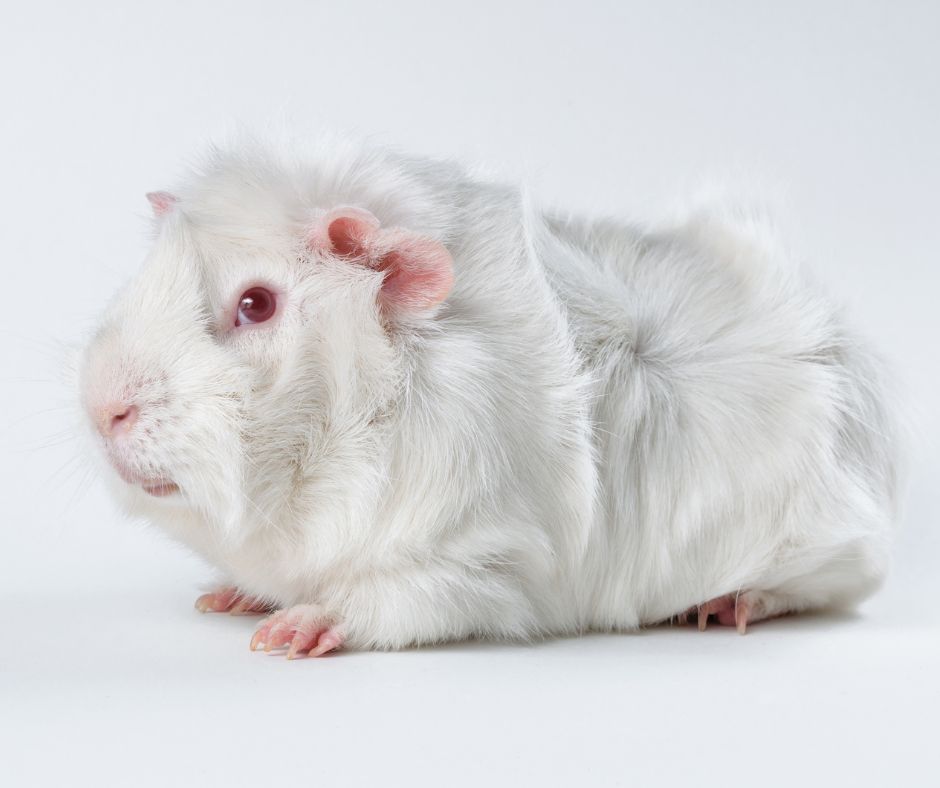
Guinea pigs are fun, cuddly pets that are easy to take care of. But even though they’re small, they still need proper care and housing to stay healthy and happy. So, what does a healthy guinea pig look like? Here are some things to look for:
- A bright, shiny coat.
- Plenty of activity, bright and alert
- Agile, and able to move around
- Clean ears, mouth and nose,
- Clear eyes and a dry nose, with no signs of discharge.
- A good appetite and enthusiasm for food, toys
- No signs of dental problems.
- No signs of breathing problems.
- “Popcorning”
- A clean bottom.
How Do I Know If My Guinea Pig Is Sick?
It is important to know the signs of a sick guinea pig. One of the first things to look for is a change in eating habits. If your guinea pig suddenly stops eating or starts to lose weight, this could be a sign of illness.

Other signs include:
- lack of appetite
- Weight loss
- Excessive thirst
- quiet
- Diarrhea
- Breathing difficulty
- Abnormal hair loss
- abnormal scratching
- Skin lesions
- Eye or nose discharge
- Labored breathing, coughing, or sneezing
- Drooling
- Eye or nasal discharge
- Overgrown teeth
- Bloody urine
- Difficulty walking
- lethargy
If you notice any of these changes in your guinea pig, take them to the vet for an evaluation. With prompt treatment, most guinea pigs will make a full recovery.
How Long Do Guinea Pigs Live For As Pets?
Altogether, they can live from 5-7 years with proper care. Guinea pigs come in many different colors and varieties (I will not cover these in this article).
A full-grown guinea pig weighs between 1.5 and 2.75 pounds (700 to 1200 grams), depending on the breed, age, and sex of the animal. Males tend to be slightly larger than females.
How Much Does It Cost to Own a Guinea Pig Per Month?

The answer may surprise you – guinea pigs are actually quite low-maintenance pets. The biggest expense you’ll need to budget for is food, which should cost around $10 per month.
You’ll also need to provide your guinea pig with a spacious cage, bedding, hay, water bottle, and occasional toys. These items will cost around $60 upfront, but you won’t need to replace them very often.
Overall, the monthly cost of owning a guinea pig is quite reasonable – you can expect to spend around $70 per month on food and supplies. And in return, you’ll have a furry friend who is sure to bring you hours of enjoyment.
Where To Purchase Guinea Pigs?
One of the first steps in purchasing a guinea pig is to find a reputable seller. Guinea pigs are available for purchase at many pet stores, including Petco. However, it’s important to make sure that the guinea pigs for sale at Petco are healthy and well-cared for.
Another option is to purchase a guinea pig from a breeder. This can be a good option if you’re looking for a specific type of guinea pig, such as one with rare coloring or markings.
However, it’s important to do your research to make sure that the breeder is reputable and that their guinea pigs are healthy and well-cared for.
Once you’ve found a reputable seller, you can then choose the guinea pig that’s right for you. Consider factors such as personality, age, and appearance when making your selection. With a little research and careful consideration, you’ll be able to find the perfect guinea pig for your home.
How Much Do Guinea Pigs Cost?
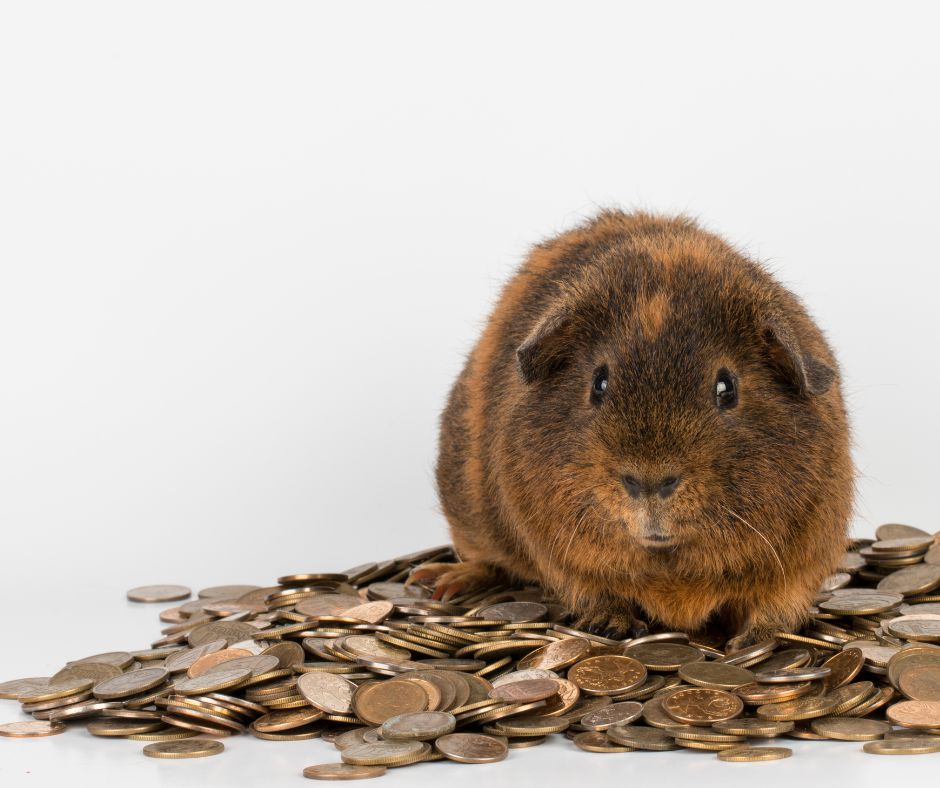
There are about 14 guinea pigs breeds. Piggies are about $10-$35 each depending on the color and breeds. The average price is $25, but we’ve heard they can be up to $40 or even higher at some pet stores.
If you want a healthy one, expect to pay as much as $60-$100. The younger and healthier they are, the more expensive they tend to be.
10 Fun Facts About Guinea Pigs
Guinea pigs also have some characteristics that are very different from the other small pets you may be familiar with – namely their social structure and how they breed! Guinea pigs (or “cavies”) are herd animals, not solitary like rabbits or most pet rodents. There are many interesting facts about piggies, here are the top 10 facts.
- Guinea pigs are nocturnal
- The guinea pig’s teeth never stop growing
- A group of guinea pigs is called a herd or fluffle.
- They can jump as high as one foot into the air
- They are cousins to rabbits, but they are more closely related to camels
- They can be trained to do tricks, can learn their names, and respond when called
- Unlike most rodents, guinea pigs are known for being “cuddly” and friendly with humans.
- Guinea pig’s front teeth grow at an amazing rate of 3 inches per year
- When they sleep they either sleep on their backs or on their side with their feet in the air
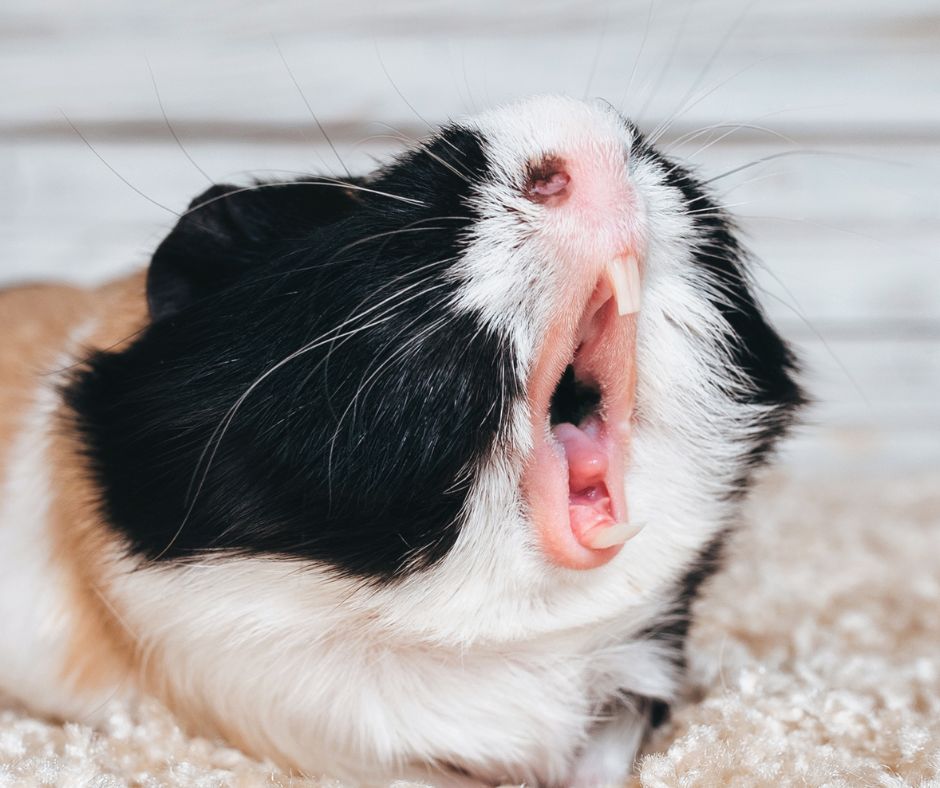
Conclusion
Guinea pigs are very sweet pets. They require a lot of care, but they are very trainable and adorable. They should always have a large cage to live in and lots of time to play outside their cage.
Guinea pigs need toys and exercise equipment such as ramps, slides, and ladders. They also require hay every day and fresh vegetables to eat twice a week. Guinea pig care is not hard once you understand what you are doing. Hope this article helps you better understand guinea pigs.
